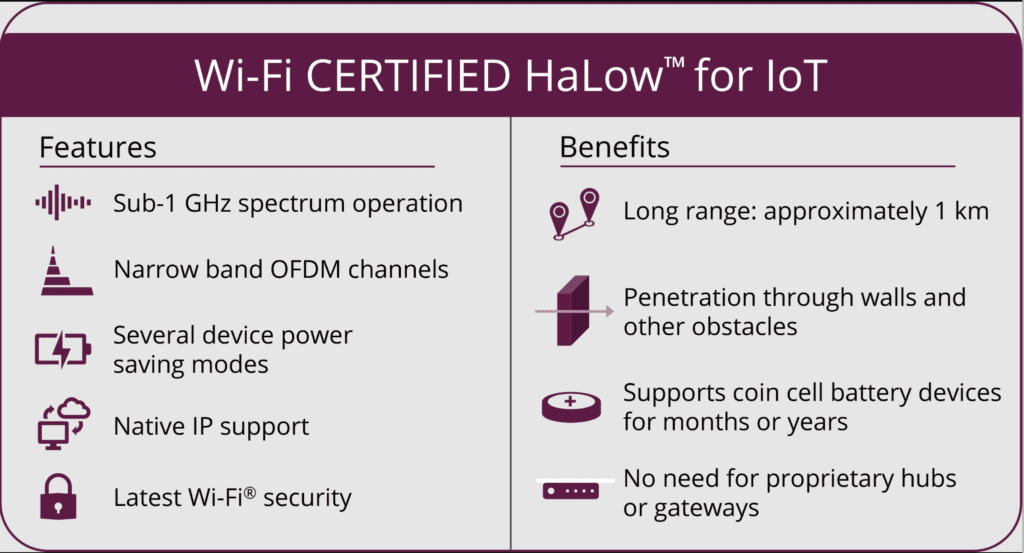Operating in the sub-1 GHz band, Wi-Fi HaLow sports long range and low power, making it suitable for IoT environments
The Wi-Fi Alliance has announced Wi-Fi Certified HaLow, designed for the certification of products incorporating IEEE 802.11ah technology, expanding Wi-Fi applications for the Internet of Things (IoT).
Operating in the sub-1 GHz band, Wi-Fi HaLow sports long range and low power connectivity, and can provide reliable connectivity in challenging Wi-Fi environments. These characteristics make the technology suitable for IoT and Industrial IoT (IIoT) environments, in addition to retail, agriculture, healthcare, smart home and smart city markets.
“Wi-Fi Certified HaLow further extends Wi-Fi’s leading role in IoT to address a new range of secure and interoperable use cases that require longer range and lower power,” said Edgar Figueroa, president and CEO, Wi-Fi Alliance. “There are growing opportunities to streamline connectivity in the growing IoT market, and Wi-Fi HaLow builds on a universally trusted Wi-Fi foundation to pave the way for emerging IoT applications to benefit homes, businesses and industries.”

Sensors, personal wearable devices, security cameras, utility meters and other applications that require multi-year battery operation make for great Wi-Fi HaLow candidates.
According to Phil Solis, research director at IDC, companies have been developing Wi-Fi HaLow chipsets “for years,” and therefore, the firm “expect [s] shipments to break 10 million in 2022.”
Solis also explained that while Wi-Fi HaLow devices are already being used in industrial environments for things like tablets and security cameras, the certification program will enable such devices to “make their way to smart home environments” for applications like video baby monitors.
“Wi-Fi HaLow facilitates a more holistic approach to wireless connectivity. Because it is Wi-Fi, it is more easily integrated with existing Wi-Fi networks, supports native IP networking, and provides the latest in Wi-Fi security,” the Wi-Fi Alliance stated on its website. “High data throughput and low-latency architecture allow IoT devices to transfer secured data to cloud-based application servers. When field upgrades are necessary, Wi-Fi HaLow provides the capacity for efficient, secure over-the-air updates, minimizing device downtime.”
Wi-Fi HaLow adopts existing Wi-Fi protocols, including multi-vendor interoperability, strong WPA3 security and easy setup. Among the first Wi-Fi certifies HaLow products include those from Methods2Business, Morse Micro and Newracom.

